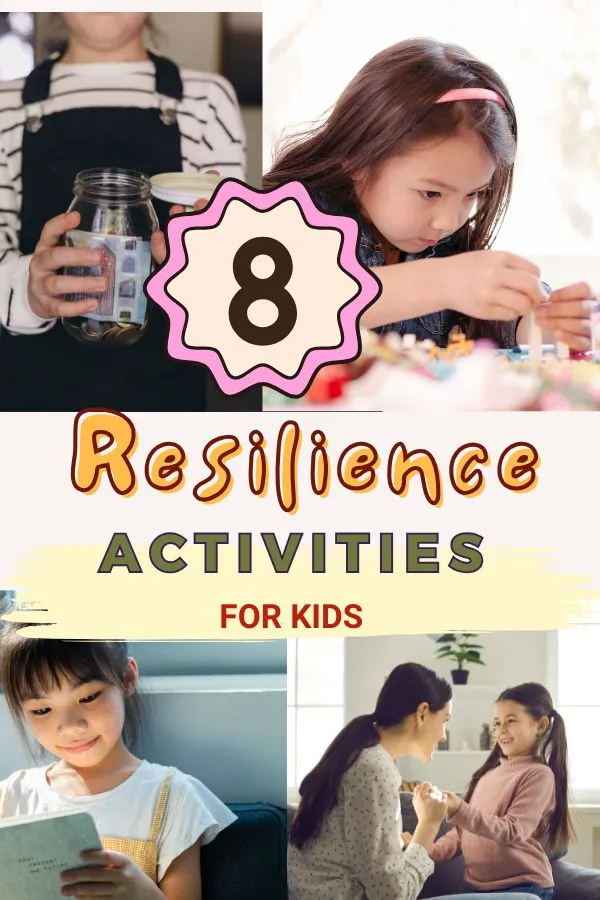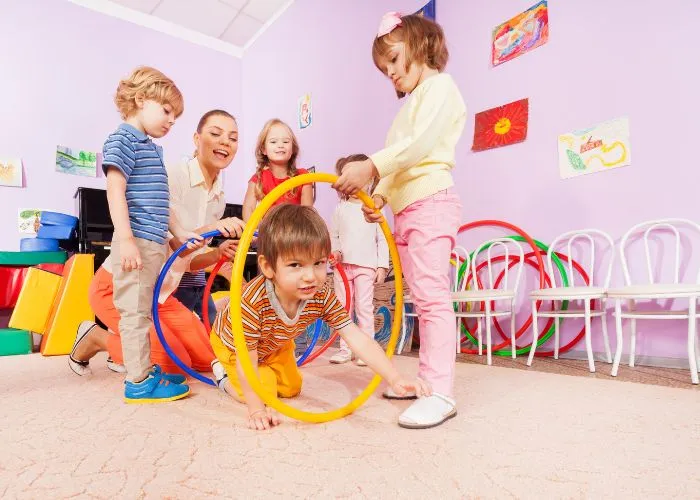Do you know how to use everyday activities to teach resilience to your kids ? and how they can change the lives of your kids?
Resilience is being able to face difficult feelings or situations and continue to move forward anyway. It involves asking for help when necessary.
However, this can be misapplied by hiding feelings or dodging situations, trying to appear strong to others.
Here are some activities we can use to teach kids about resilience effectively.

These resilience activities for kids can be enjoyable and help young minds develop various skills and manage their emotions, building confidence and strength.
Best Resilience Activities for Kids
By opting for the right resilience activities you can help your kid learn real-life challenges.
1. Role Play

Role-play is a fun game where children act out emotions like happy, sad, scared, excited or sorrowful.
They can also play the role of their favourite characters and how they feel. It will help them to identify their emotions. They will get familiar with the range of feelings and will know how a person feels at a certain moment.
Role play will help them respect the emotions of others and they will better understand how to react in a situation.
Here is a list of 20 role play ideas for kids.
2. Story Time with a Twist

Story time with some twist is another resilience activity. Children always love to listen to stories.
Let them choose their favourite story with a favourite character and ask questions about what was the problem their character was going through.
Ask them what they could do in a similar situation. Storytelling will build empathy in kids and they will know how to go through difficult times.
3. Build It Back

Playing with blocks or cups and building towers is a fantastic activity to build resilience and grit.
Provide material to the kids to build towers and they have to balance while creating a height.
A little imbalance may have a bounce back and they may feel frustrated. Ask them to rebuild a tower again so they can overcome the frustration.
Once they finish the tower celebrate their effort and encourage them to keep on trying different towers in different ways.
4. The Calm Corner

Resilience means coping with difficult situations like stress or failure and moving back to positivity.
Create a calm corner in your home by putting cosy pillows, soft toys, books, sensory tools, bottles and attractive stuff.
Let the kids visit the corner when they need a break. Ask them to explore the corner and enjoy the comfort.
Performing simple breathing activities, stretch movements or resting on soft pillows allows children to have control of their emotions. This activity is the best when you feel slow or suffer from mood swings.
5. Obstacle Solving

Create physical activities for kids so they can learn obstacle-solving skills. You can create an indoor or outdoor setup using chairs, pillows, blocks or water bottles.
Here are creative ideas to make 13 obstacle courses indoors.
Make it fun but add some challenges. Encourage by cheering on clearing the obstacles. Overcoming physical challenges promotes mental strength and confidence that “yes I can do hard things”.
6. Problem-Solving Activities

Encourage your child to solve everyday problems like zipping the jacket, tying the laces, tucking the shirt. or classic problem solving games like puzzles.
Praise their efforts and provide them a chance to make the decision. Ask them questions like “what could we try first?” or “ what do you want to do today?” it will support their decision-making and problem-solving skills..
7. Gratitude Circle

This is a group activity that you can do in a classroom.
Make a circle and ask your kids to share about something they are thankful for. Ask them what they like the most in their routine?
Sitting in a group and praising the things you want the kid to be grateful for. Gratitude buildup promotes a positive mindset and makes a kid hopeful even when life is hard.
8. “I Did It” Jar
This is a simple yet very powerful activity that you can introduce.
Ask your child to write (or draw depending on their age) about all the small wins by labelling it “I did it”.
Once the jar is full, ask them to reread every success so they can recognise their own strength. It will provide them with a strong self-image and will help them overcome fear.
Wrapping Up
Resilience isn’t something kids are born with but something they learn every day.
Parents and educators play a crucial role in teaching resilience to the young ones. Through everyday resilience activities, you can help our child become confident and independent.

Leave a Reply